Water is fundamental for life, so it’s essential any time you’re thinking about survival to make sure that you’ve considered hydration.
This applies not just to trips to the wilderness, like camping or hunting, but also to general emergency preparedness, whether in a personal bug-out bag, a home emergency prep kit, or an all-out apocalypse shelter.
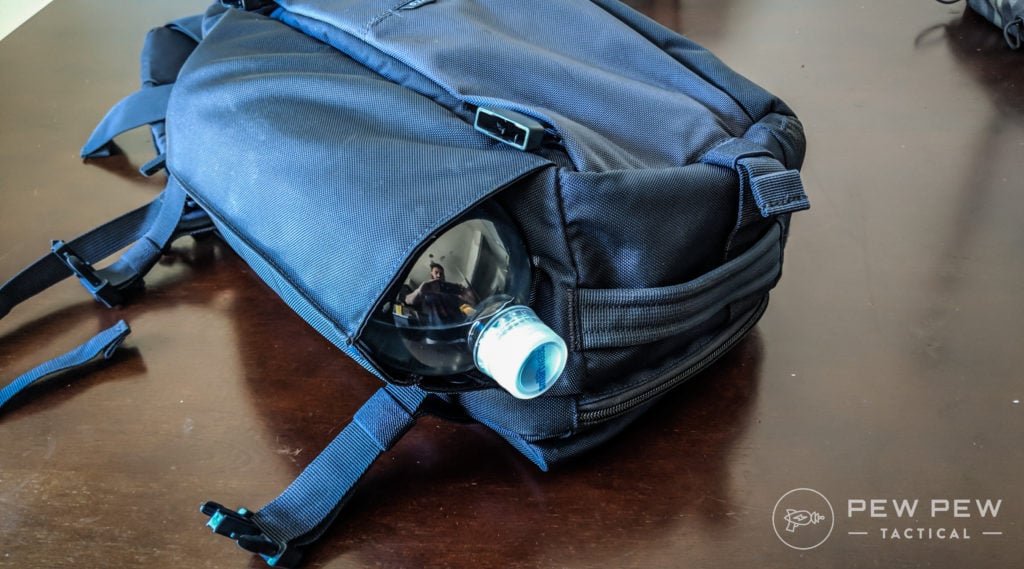
A common mistake that people make for both wilderness survival and emergency preparedness is trying to just store as much water as they think they’ll need, but there are a few problems with this.
For one, water is heavy and takes up a lot of space, and we’re talking about situations where weight and space are at a premium.
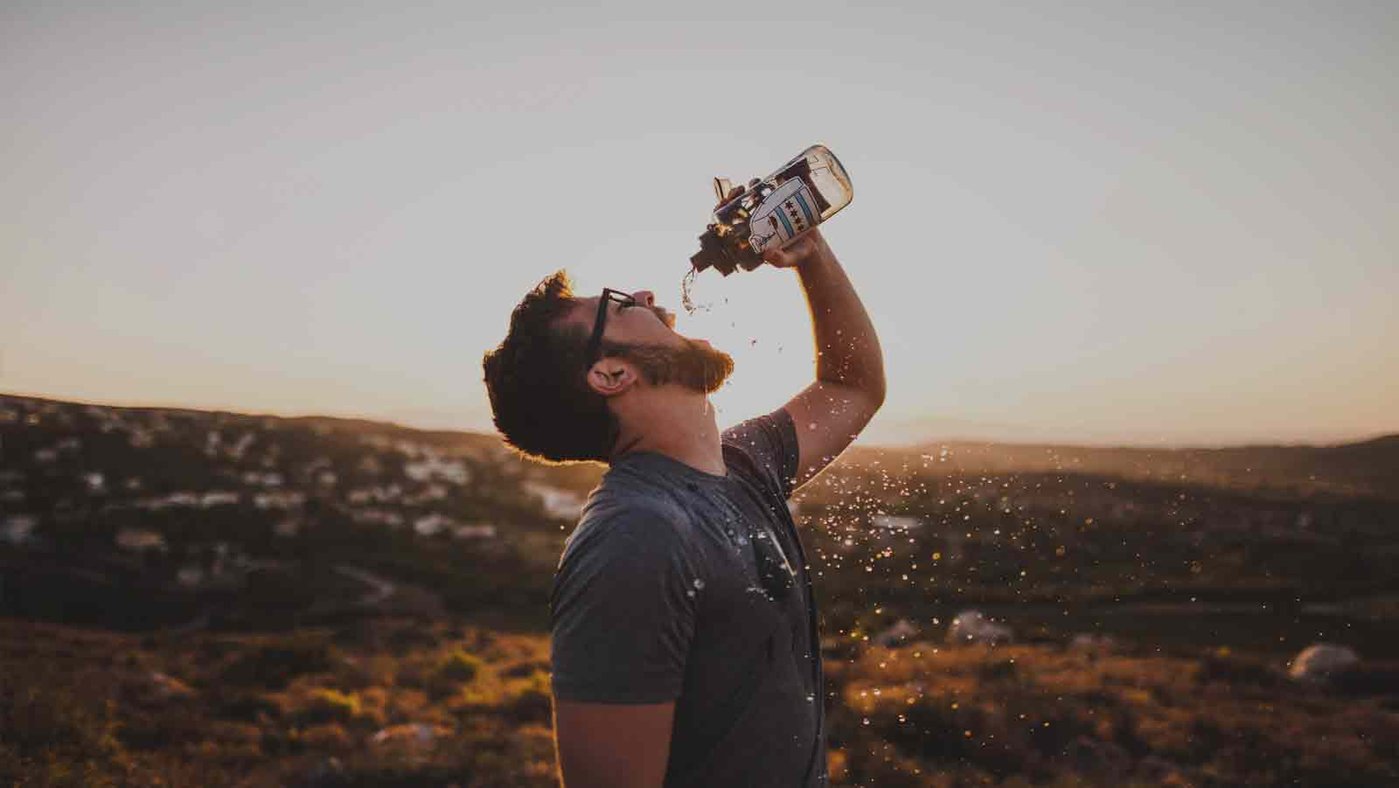
Second, water can easily spill, leak, or become contaminated without you even noticing, leaving you with no water when you need it.
And finally, what happens if and when you run out of water earlier than expected or have to rely on your supply for longer than anticipated and have no way of getting more clean water?
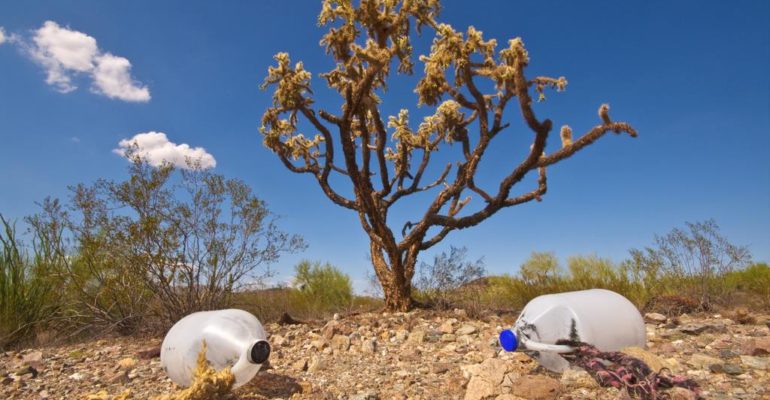
So, while you should plan on having some water ready for any survival kit, you also need a way to create new potable water continuously.
Filters and purifiers allow you to continually produce more drinkable water and take up less space and weight than water itself, even with extra filters and other maintenance equipment.
Fortunately, there are tons of options out there, and I’m going to talk to you about some of the best. So keep reading to learn more and see what products we recommend!
THE QUICK LIST
-
Editor's Pick Straw Filter
-
Best Personal Water Filter
-
Best Filter + Purifier
-
Best Pump Filter
-
Best Budget Pump Filter
-
Best Gravity-Fed Filter
-
Best Grab-and-Go Gravity Fed Filter
Table of Contents
Loading...
How We Chose the Best Water Filters & Purifiers
The entire team at Pew Pew Tactical had a hand in contributing to this post. Most of us have some level of experience with prepping and/or survival and use that knowledge to test out filters and purifiers.
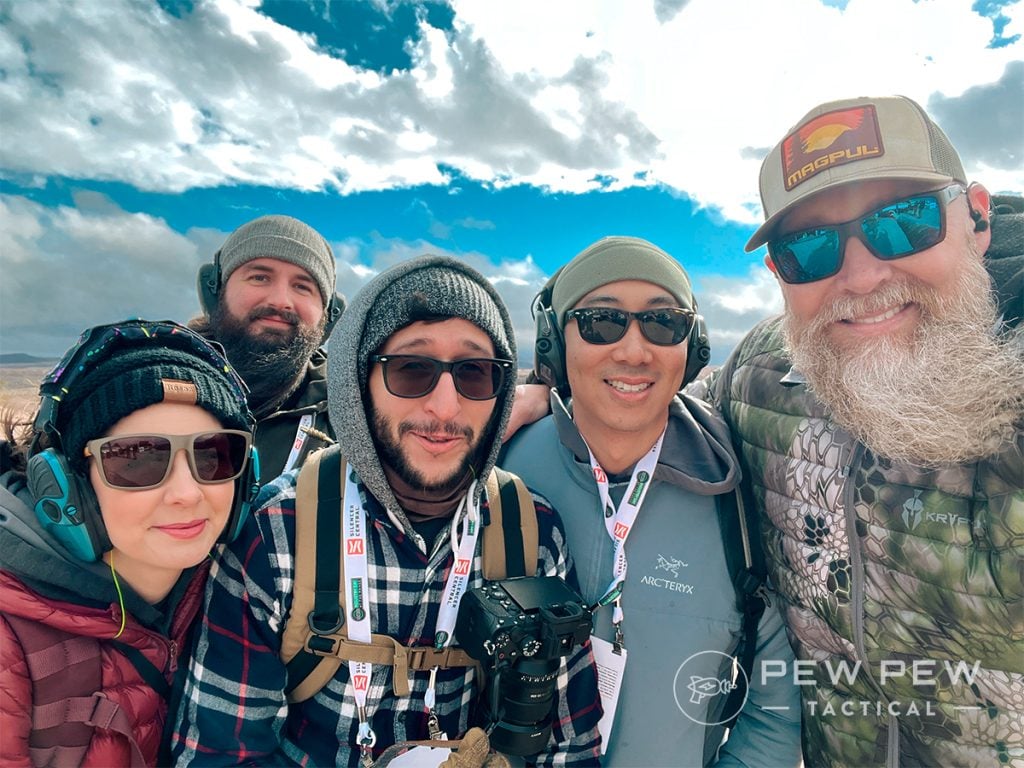
We constantly test gear and regularly update articles as new models become available, so if you’re favorite isn’t here, check back soon!
Best Survival Water Filters and Purifiers
Straw & In-Line Filters
1. Editor’s Pick Straw Filter – Sawyer Mini
-
25% off all OAKLEY products - OAKLEY25
Copied! Visit Merchant
Pros
- Can handle up to 100,000 gallons
- Protection from 99.99% of dangerous bacteria
Cons
- Straw like so you can't filter as much at one time
Hands down, the best straw water filter on the market is the Sawyer Mini.
These are my water filters of choice, and they’re so inexpensive that you can easily keep one in each of your vehicles and bug-out bags without breaking the bank.
Each of these filters can handle up to 100,000 gallons, something most other straw filters can’t even come close to, and you get protection from 99.99% of the dangerous bacteria in your water, 99.99% of all dangerous protozoa, and 100% filtration of all microplastics.
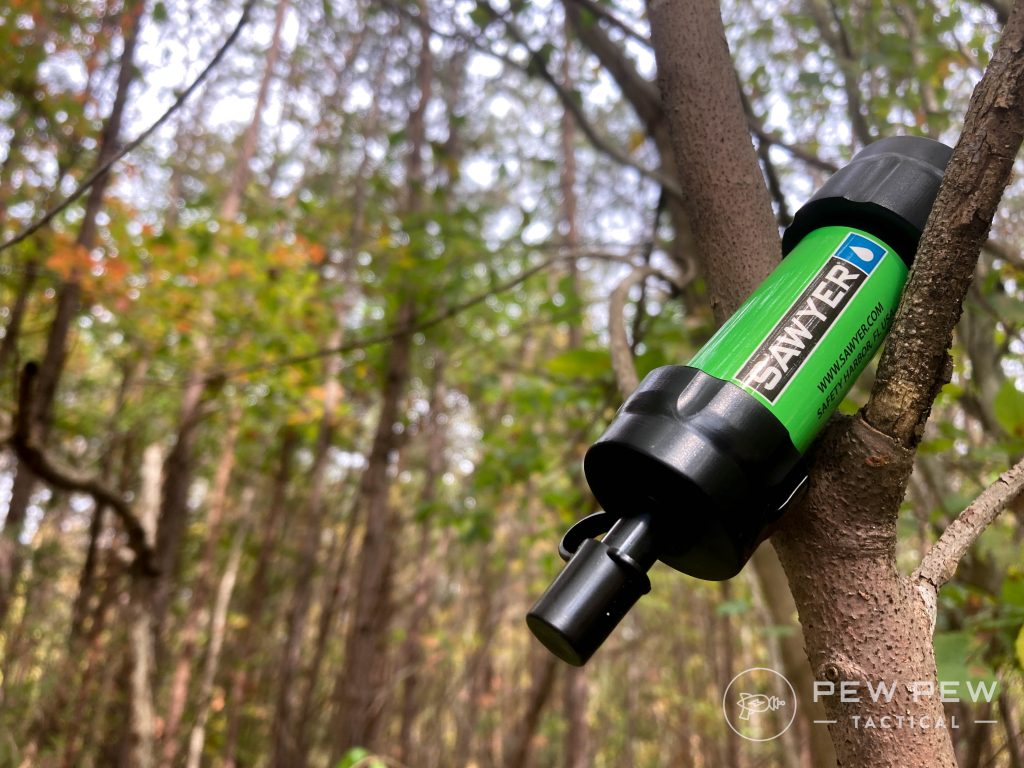
That’s pretty hard to beat.
The Sawyer Mini gives you options for how it’s used as well. You could get down on your belly in the weeds like a Lifestraw requires, but if that’s not your cup of tea, you can just attach a Sawyer Mini to a water bottle or even hook it up in line with your Camelbak-style water system.
Fantastic protection, a superior lifespan, multiple options, and easy on the wallet. All of this combines to make the Sawyer Mini the best straw filter you can get your hands on.
What’s your take on the Sawyer Mini? Rate it below!
2. Best Personal Water Filter – Sawyer Squeeze
-
25% off all OAKLEY products - OAKLEY25
Copied! Visit Merchant
Pros
- Can filter out 100,000 gallons
- Affordable
Cons
- Can't filter a lot at one time
Sawyer makes some amazing products, and the Squeeze is no exception to the rule. If you’re not too interested in a Sawyer Mini, I would highly recommend taking a look at the Sawyer Squeeze.
For starters, the Sawyer Squeeze is only $30. That’s a great price for a personal water filter. Sure, you could pick up a LifeStraw for roughly half that, but a LifeStraw can only filter 1,000 gallons.
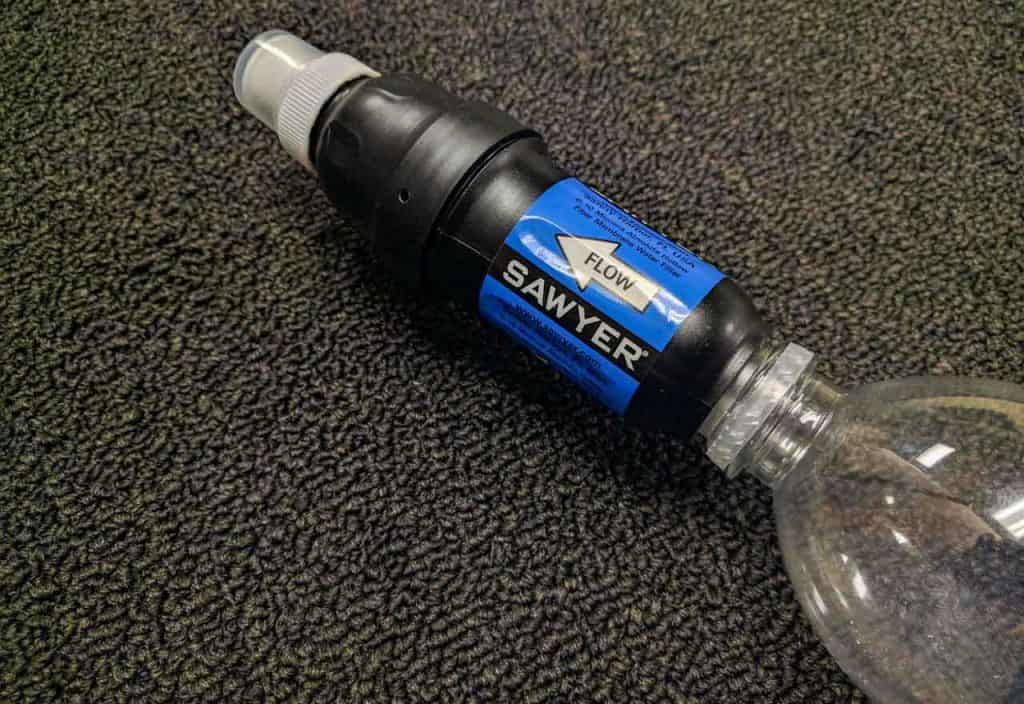
A Sawyer Squeeze can filter out 100,000 gallons.
You would have to spend roughly $1500 on 100 LifeStraws to get the same number of gallons filtered as one $30 Sawyer Squeeze.
Pump Filters
3. Best Filter + Purifier – MSR Guardian Purifier
-
25% off all OAKLEY products - OAKLEY25
Copied! Visit Merchant
Pros
- Purifier + filter
- Self cleanses
Cons
- Pricey
As a filter and purifier in one, the MSR Guardian Purifier is the top-of-the-line for civilian pump filters. It filters out sediment, bacteria, viruses, and protozoa as small as .02 microns at a flow rate of 2.5 liters per minute.
It also self-cleanses as you pump, maintaining a consistent flow rate and eliminating the need to backflush or clean the filter.
The filter cartridges have a lifetime of 10,000 plus liters and are quick and easy to switch out in the field.
4. Best Pump Filter – Katadyn Pocket Water Filter
-
25% off all OAKLEY products - OAKLEY25
Copied! Visit Merchant
Pros
- Reliable and good quality
- Great warranty
Cons
- Expensive
A lot of guys I’ve met out on the trail have carried varieties of Katadyn pump filters. And for good reason — they’re fantastic. One of the most popular has always been the Katadyn Pocket Water Filter.
This piece of Swiss-engineered equipment isn’t cheap (nearly $400), but it’ll get the job done for years. You’re looking at roughly 13,000 gallons worth of use out of this pump filter before you’re going to need to buy new innards (which cost $200).
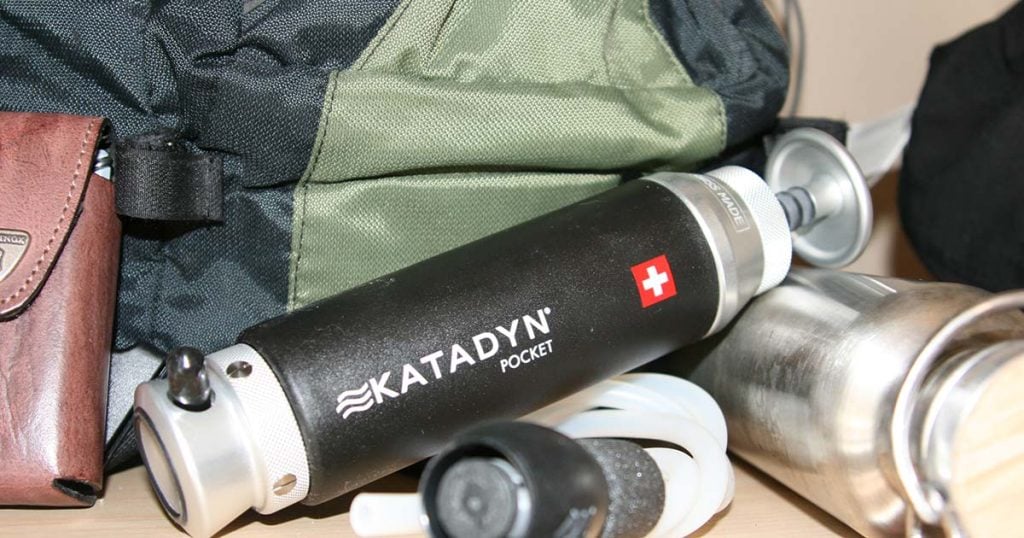
So, you’re looking at roughly three cents a gallon until you need to buy a new filter. In contrast, a Lifestraw will cost you 1.5 cents a gallon (and remove microplastics), but you’ll have to get up close and personal with that cold pond before you can drink it.
With a pump filter, all you have to do is throw your retrieval hose into the pond and then put the output hose into your bottle. And with a 20-year warranty, you have a lot of good reasons to choose a Katadyn product.
5. Best Budget Pump Filter – MSR MiniWorks EX Filter
-
25% off all OAKLEY products - OAKLEY25
Copied! Visit Merchant
Pros
- Affordable
- Ceramic and carbon filter cartridges
Cons
- May not last as long as other models
I personally use the MiniWorks when camping and traveling. It protects against bacteria, protozoa, sediment, and toxic chemicals using ceramic and carbon filter cartridges with a pore size of .2 microns.
The flow rate of the MiniWorks EX is about a liter per minute and has a lifetime of about 2,000 liters. It weighs about a pound.
6. Survivor Filter Pro Portable Water Filter Pump
-
25% off all OAKLEY products - OAKLEY25
Copied! Visit Merchant
Pros
- Triple filtration system
- Lifetime of up to 100,000 liters
Cons
- Bigger
- Flow rate of about half a liter of water per minute
Now, if you want filtration somewhere in between, you can go with the Survivor Filter Pro Portable Water Filter Pump.
Its triple filtration system removes bacteria, protozoa, and sediment down to .01 microns, as well as 99.5% of mercury and 93% of lead.
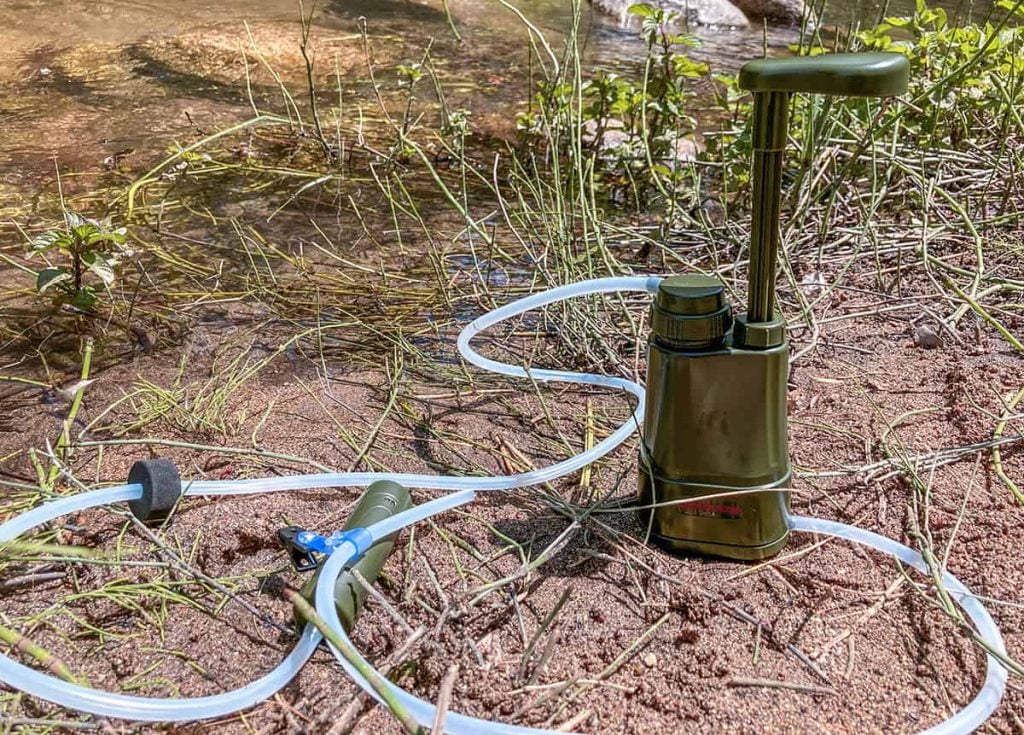
It only weighs 12.8 ounces, has a lifetime of up to 100,000 liters, and is even a bit cheaper than the MiniWorks.
So what’s the catch? The Survivor Filter Pro only has a flow rate of about half a liter of water per minute.
Are the perks worth it? That depends on how patient you are, how much water you have to filter, and how worried you are about cutting weight.
Gravity-Fed Filters
7. Best Gravity-Fed Filter- Sawyer SP160
-
25% off all OAKLEY products - OAKLEY25
Copied! Visit Merchant
Pros
- Handle large volume
- Affordable
Cons
- Need paracord or rope to hang
When it comes to gravity filters, I continue my love affair with Sawyer. The SP160 is essentially just a bag, a tube, and a variant of the Sawyer Mini. Fill the bag, hang it up, and filtered water comes out of the filter below.
You’ll filter out virtually all protozoa and bacteria that are in your water (down to 0.1 microns), get 100,000 gallons of use out of a single filter, and only spend around $40 for the entire system to boot.
First, you’re probably going to want to bring a carabiner or some paracord so that you can hang this unit up from a tree easier.
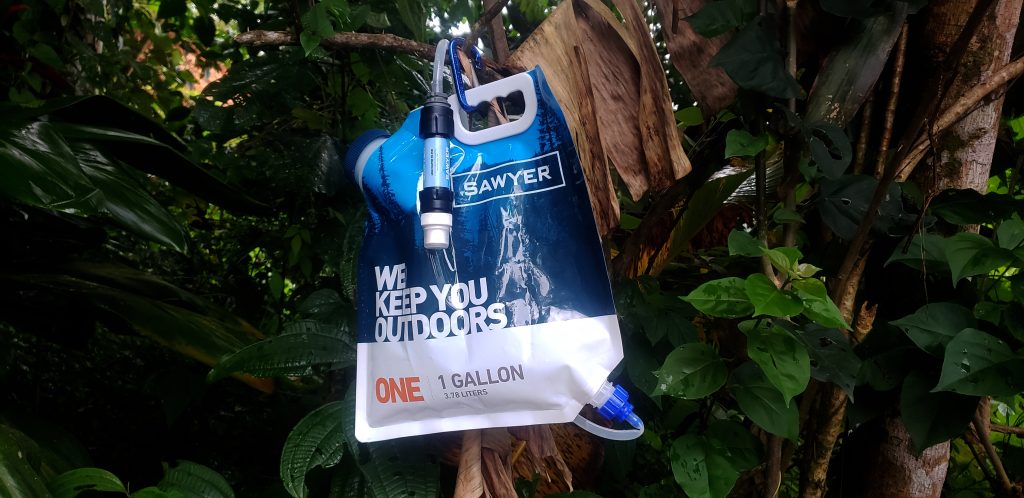
Second, use a cloth that you don’t mind getting dirty to wipe off the base of the bag (where the hose is) after you’ve filled it up.
This will keep dirty water from flowing along the outside of your hose into your clean water bottle. If you follow this advice, you’ll have a really great product that can give your family quick access to a sizable amount of water while out in the wild.
8. Best Grab-and-Go Gravity Fed Filter – Berkey Go
-
25% off all OAKLEY products - OAKLEY25
Copied! Visit Merchant
Pros
- Easy to transport
- Great grab and go option
Cons
- Pricey
I wouldn’t balk at using a Berkey Go as a gravity-fed means of having safe water to drink on the go either.
This isn’t something that you would be using while on the run through the mountains, but if you need a setup that you can quickly throw into your car for an emergency evacuation to your family hunting cabin, this is definitely an option to consider.
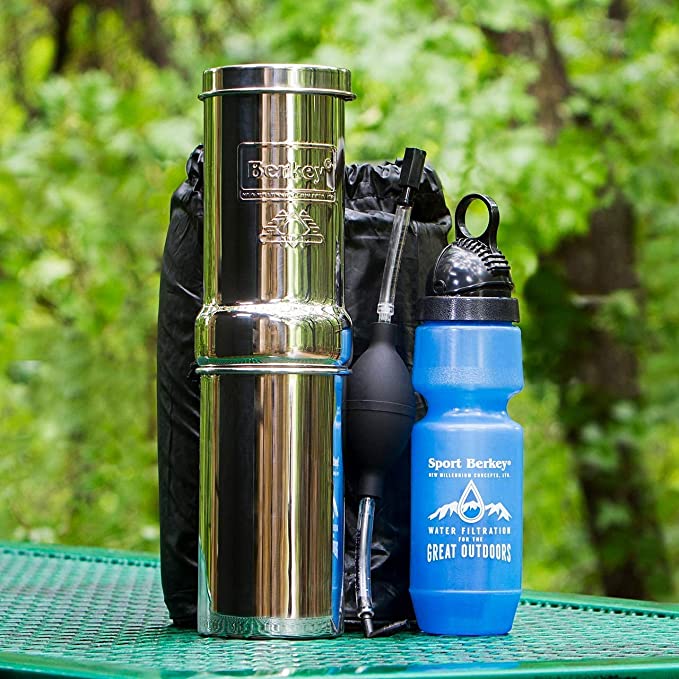
Berkeys can be bulky (say that five times fast), but the Berkey Go is a very nice easy-to-grab option that’s 10 inches tall and weighs three pounds.
Each black Berkey filter will last you for 3000 gallons, meaning that at $240 for this whole kit, you’re paying eight cents a gallon. After that, you’ll have to buy a two-pack of filters for $170, meaning you’ll pay roughly two cents a gallon from thereon out.
It’s not a bad setup if you’re going to be staying in one place for a good amount of time.
Best Water Purifiers
Speaking of purifying water separately, let’s talk about some of the second steps you can add to your water treatment plan to ensure that your drinking water is purified.
Tablets are the old standby for water purification.
9. Best Purifier – Potable Aqua with PA+ Germicidal Tablets
-
25% off all OAKLEY products - OAKLEY25
Copied! Visit Merchant
Pros
- Tablet style purifier
- Very affordable
- Easy to transport
Cons
- Have a weird taste
Potable Aqua is one of the major brands and is the one that I grew up using while camping and still use to this day. Their Potable Aqua with PA+ Germicidal Tablets are my favorite.
The system includes two types of tablets — iodine tablets, which purify the water in just 35 minutes, and neutralizing tablets, which remove any taste, odor, or color from the water, including the nasty taste that iodine tablets leave behind.
I admit I’m prejudiced against these. The ones we’ve used out on the trail made for some funky-tasting water. Maybe the “recipe” has changed since we tried them, but I would caution you to keep a packet of instant drink mix nearby to use as well. Your tongue will thank you.
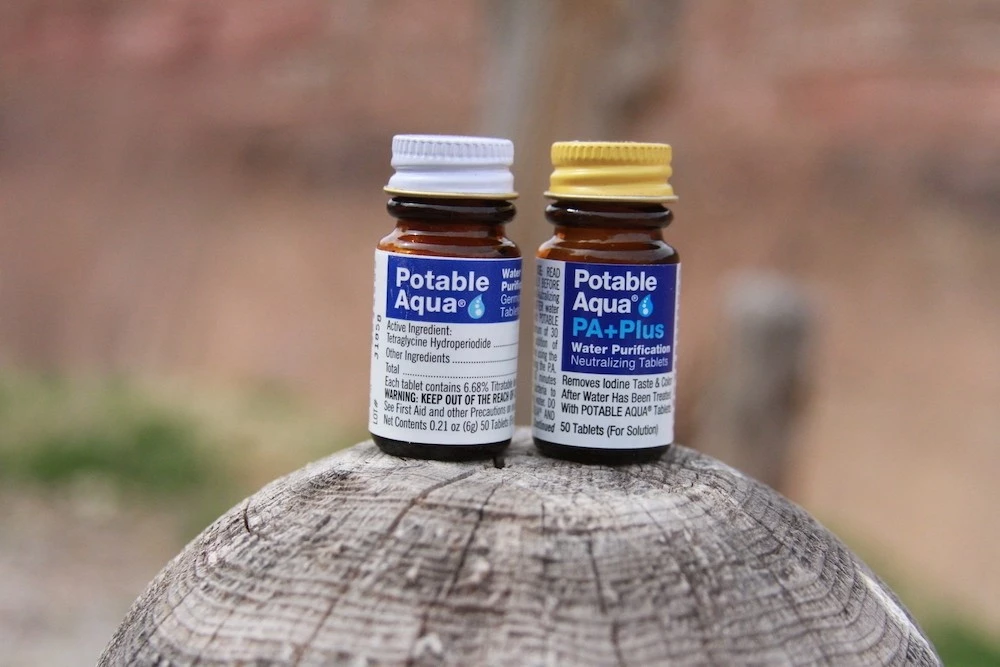
Each bottle contains 50 iodine tablets, two of which can purify a quart of water. Unopened bottles can last up to four years, and opened ones are good for up to a year.
You’ll get a little over six gallons of clean water from these guys at a cost of 70 cents a gallon, so they’re not the most cost-efficient item, but if you’re strapped to the point that you can only spare about $9, this is most certainly better than nothing.
10. Best UV Purifier – Steripen Ultra UV Water Purifier
-
25% off all OAKLEY products - OAKLEY25
Copied! Visit Merchant
Pros
- Easy to use
- No bad taste
- USB rechargeable
Cons
- Expensive
If you’d prefer a treatment you can use over and over again without having to resupply, the Steripen UV Water Purifier might be for you. I absolutely love mine.
To use the Steripen, just dip the light end into your water, then click once for a half-liter and twice for a full liter.
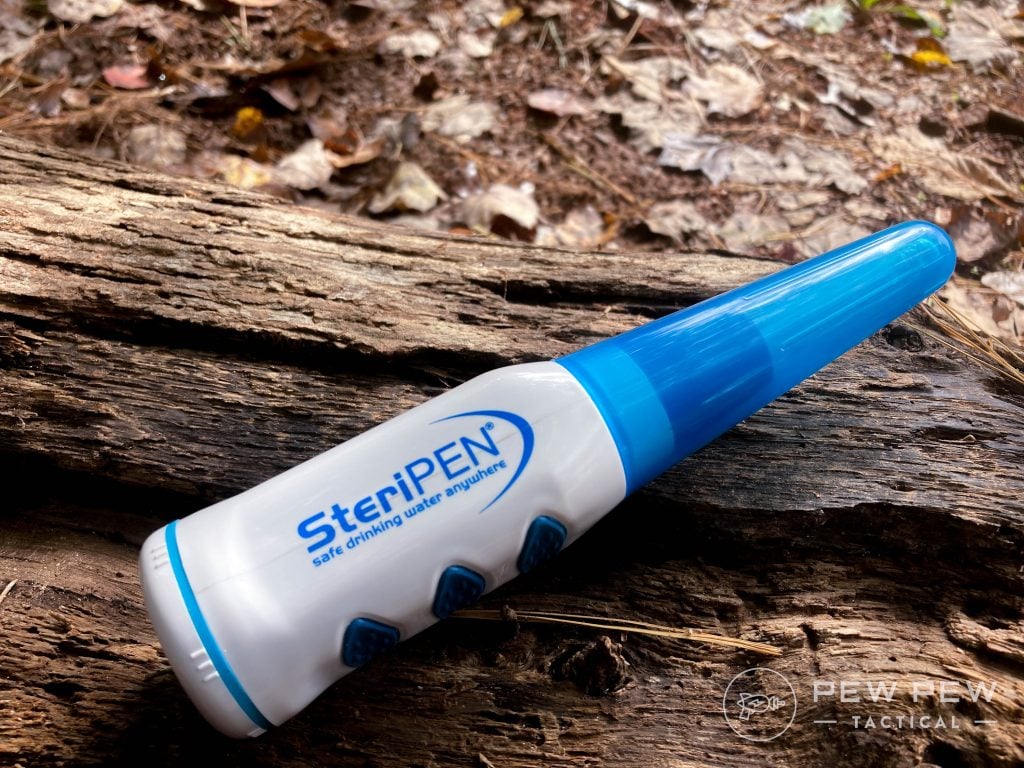
The Steripen is about ten times the price of purification tablets but can purify 50 liters before needing a recharge and has 300 recharge cycles and an effective lifespan of 3,299 gallons. The cool thing about a Steripen is that it kills everything – even viruses.
Most filters you’ll find out there are relegated to the world of protozoa and bacteria. That’s fine, as that’s what most of the baddies you’re going to encounter out in the woods are going to be.
But if you want to take things just one step farther, you’re going to want to kill those viruses as well, and that’s what the Steripen is great for.
It’s USB rechargeable and can be plugged into an outlet, a USB port on a car or electronic device, or a solar charger.
Filters vs. Purifiers
“Filter” and “purifier” are sometimes used interchangeably, but they actually describe different things.
Filters remove particulates, bacteria, and protozoa from water, but not viruses. Purifiers remove bacteria, protozoa, and viruses, but may not remove particulates.
Some filters, especially with advancing technology, are also purifiers.
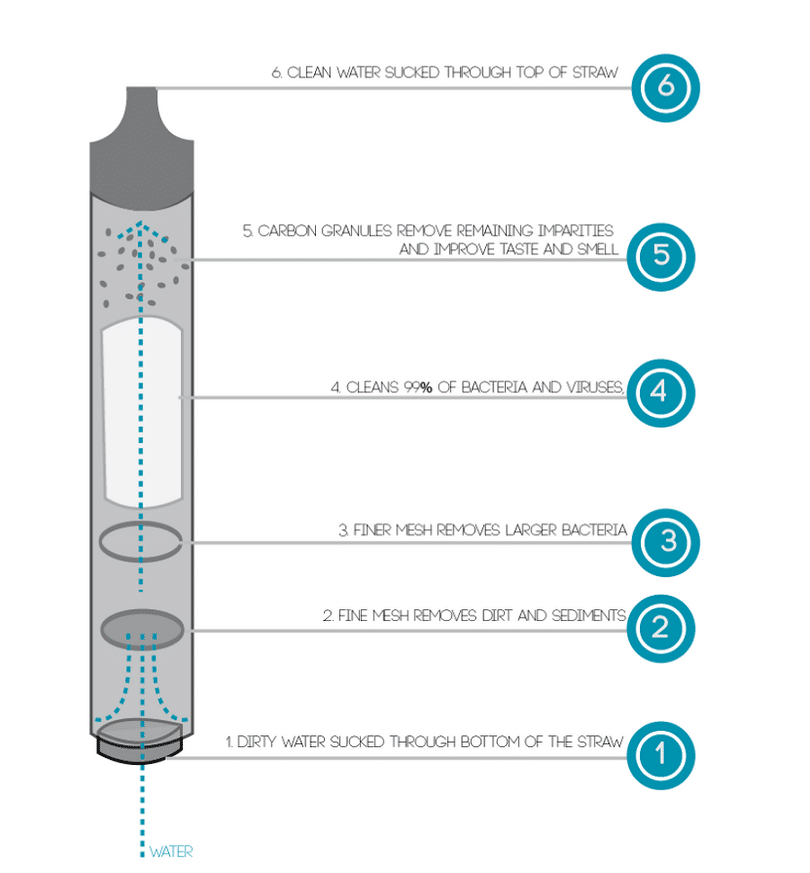
Now you don’t always need virus protection. The more remote an area, the less likely you are to encounter viruses in the water. You can generally research the area you’re traveling to and find out if you’ll need virus protection.
When in doubt, though, go with more protection.
Suppose you need virus protection and have a filter that’s not a purifier. In that case, you’ll also want to use a secondary method to remove viruses, whether boiling the water or a separate purifier or purifying treatment.
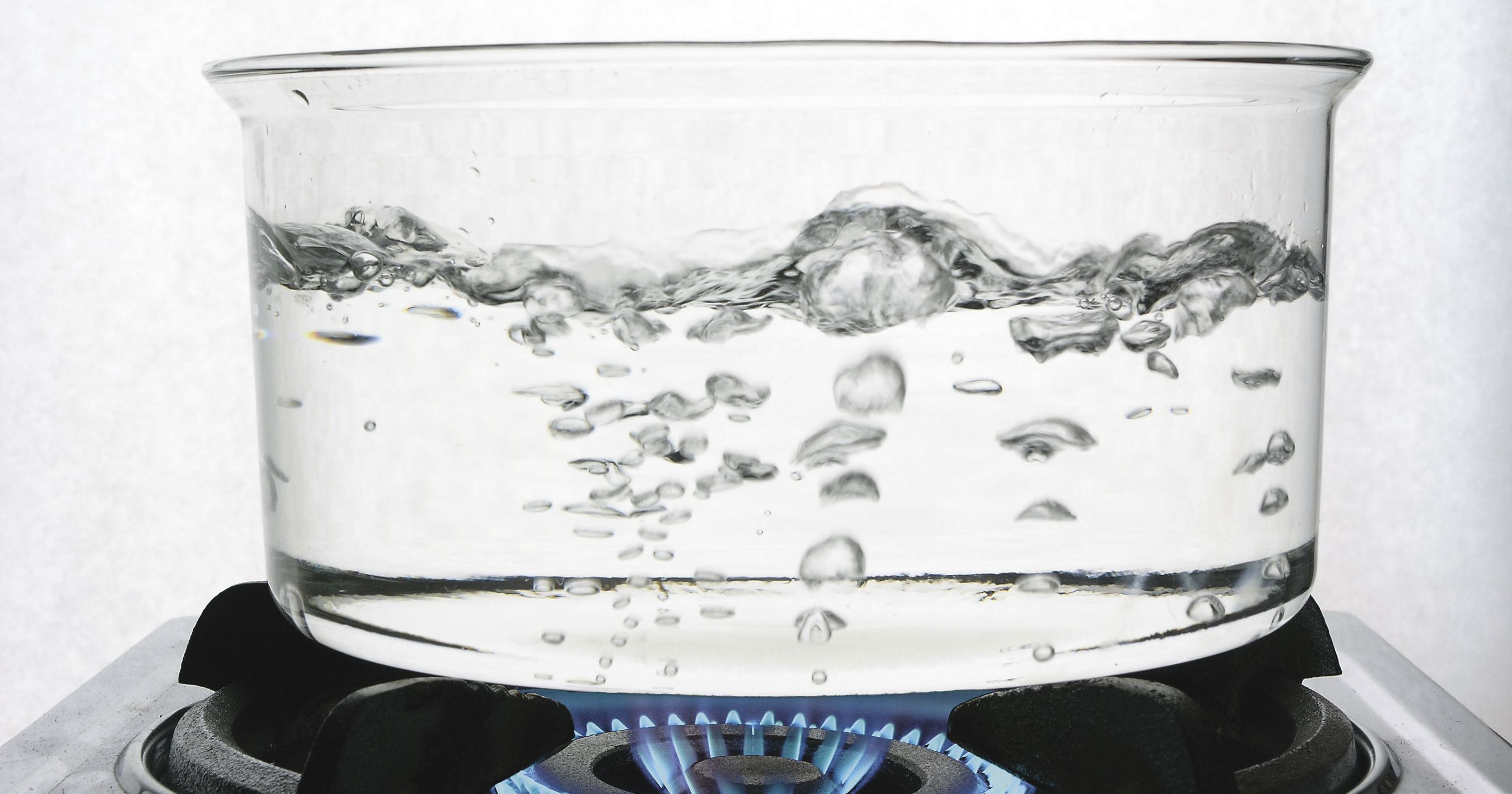
On the other hand, if you have a purifier that’s not a filter, you’ll almost always want a filter to remove particulates.
Filtering water through a piece of fabric with a fine knit, like a bandana, will tide you over if you don’t have a filter, but a filter will get smaller particulates and stand up to more.
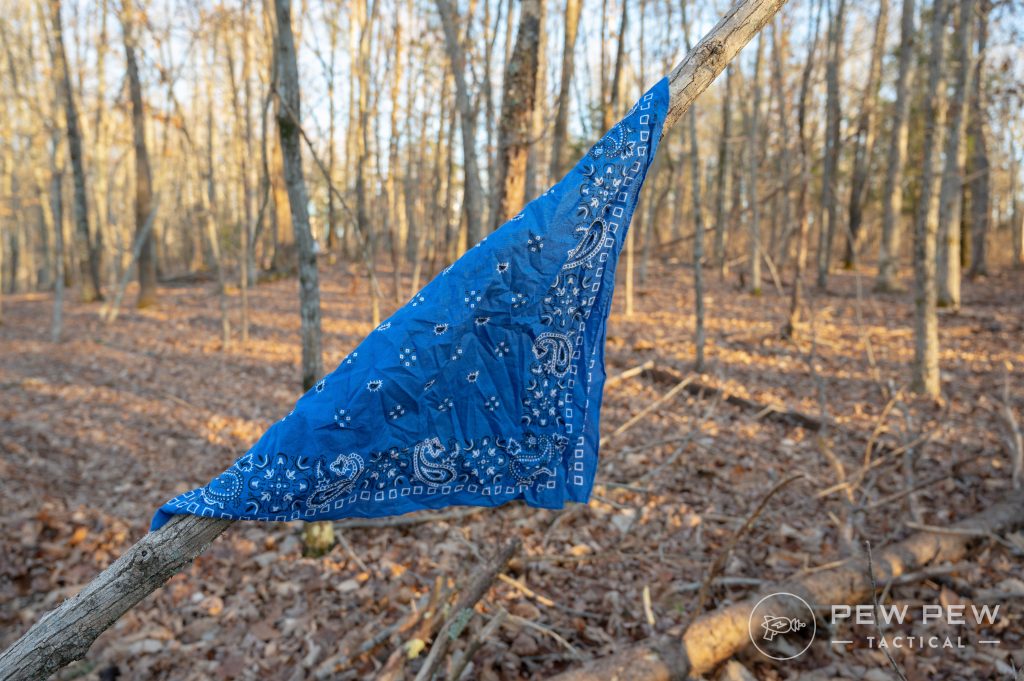
One thing to keep in mind: neither filters nor purifiers filter out toxic chemicals, radiation, or heavy metals. If you’re concerned about these types of contaminants, make sure you’re choosing a filter/purifier that can remove them.
Filters and purifiers also generally don’t remove salt from water.
For that, you’ll either need a distillation setup, which you can DIY or purchase pre-fabricated, or a desalinator. These can be pricey, but you, fortunately, won’t need them for most trips.
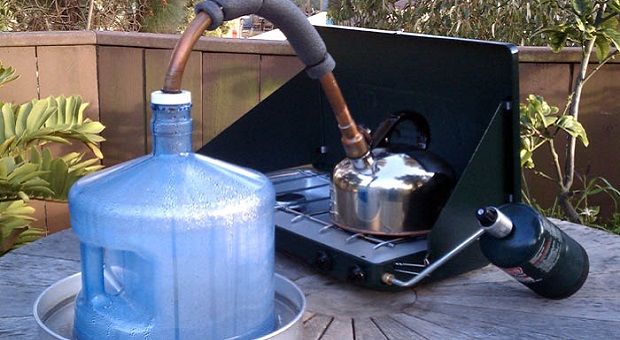
Types of Filters & Purifiers
Filters
Now that you know the difference between filters and purifiers as well as their limitations, let’s go over some of the different types of each.
Straw filters are a convenient and lightweight option for a single person and are great for bug out bags and camping or hunting in places where you know you’ll have continuous access to a water source.
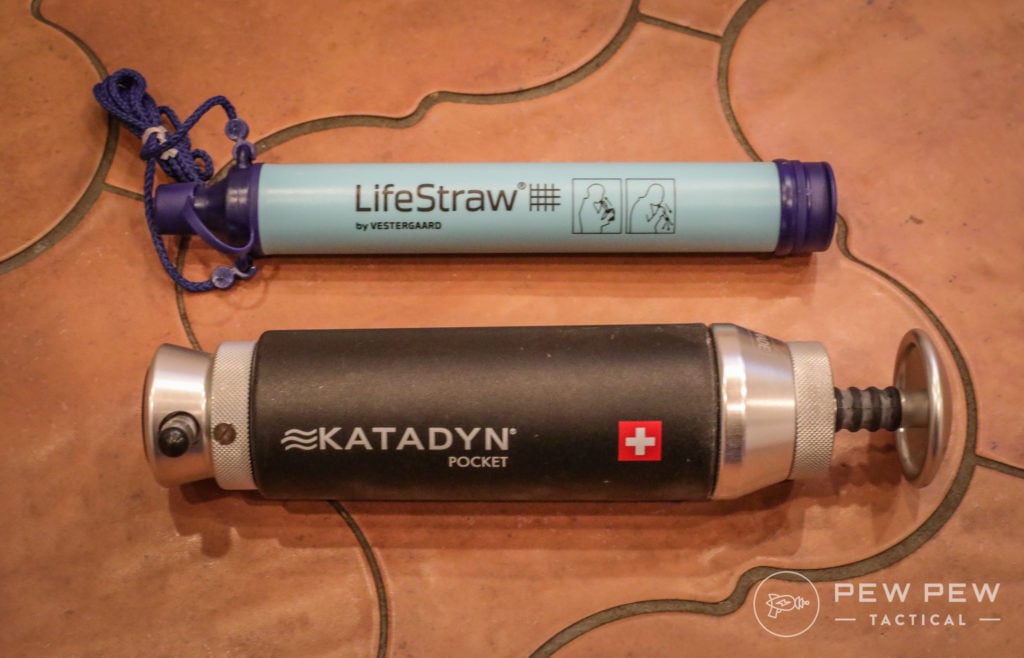
The user just sticks one end into a water source and sucks on the other end, moving the water through a filter and directly into their mouth.
Sometimes straw filters are built into water bottles, so you can put water into the bottle and take it with you without having to filter it while still at the source.
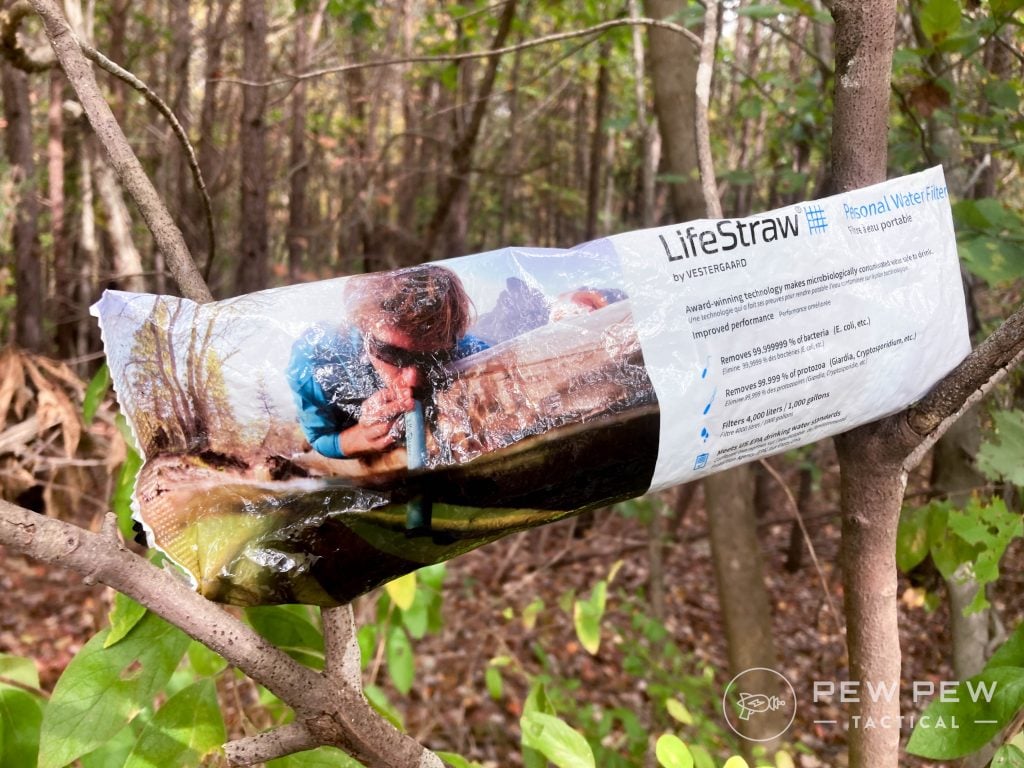
Hand pump filters are exactly what they sound like: the user manually pumps water through the filter.
They’re a lot of work compared to other filter types, but they’re smaller and more portable than gravity-fed filters. Not to mention, they can filter a lot more water than straw filters.
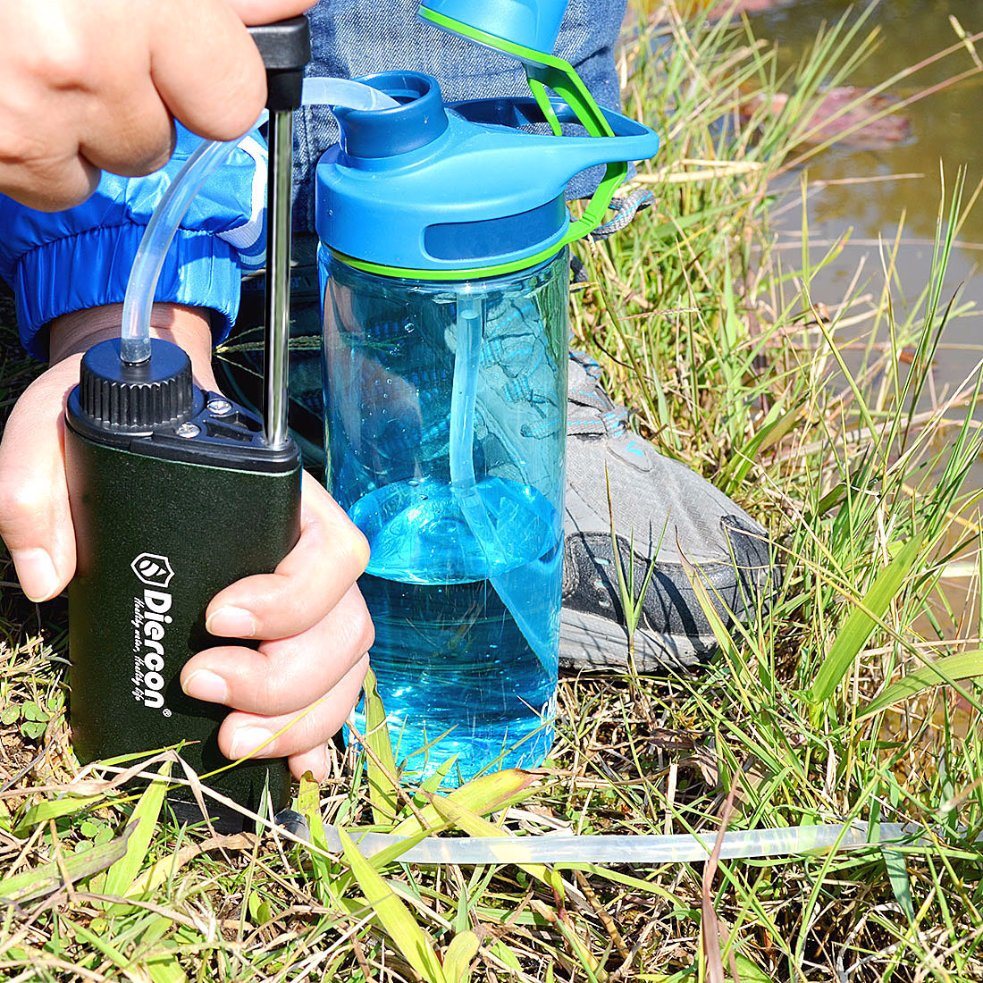
These filters are good for individuals and small groups when you don’t know that you’ll have continuous water access. Often hand pump filters can be screwed directly onto standard wide-mouth water bottle tops and hydration bladders to make it easy to travel with your newly filtered water.
Gravity-fed filters use a system of two bags attached by a hose with a filter in it. Dirty water goes in one bag and is elevated, so the water flows through the filter and down into the second bag.
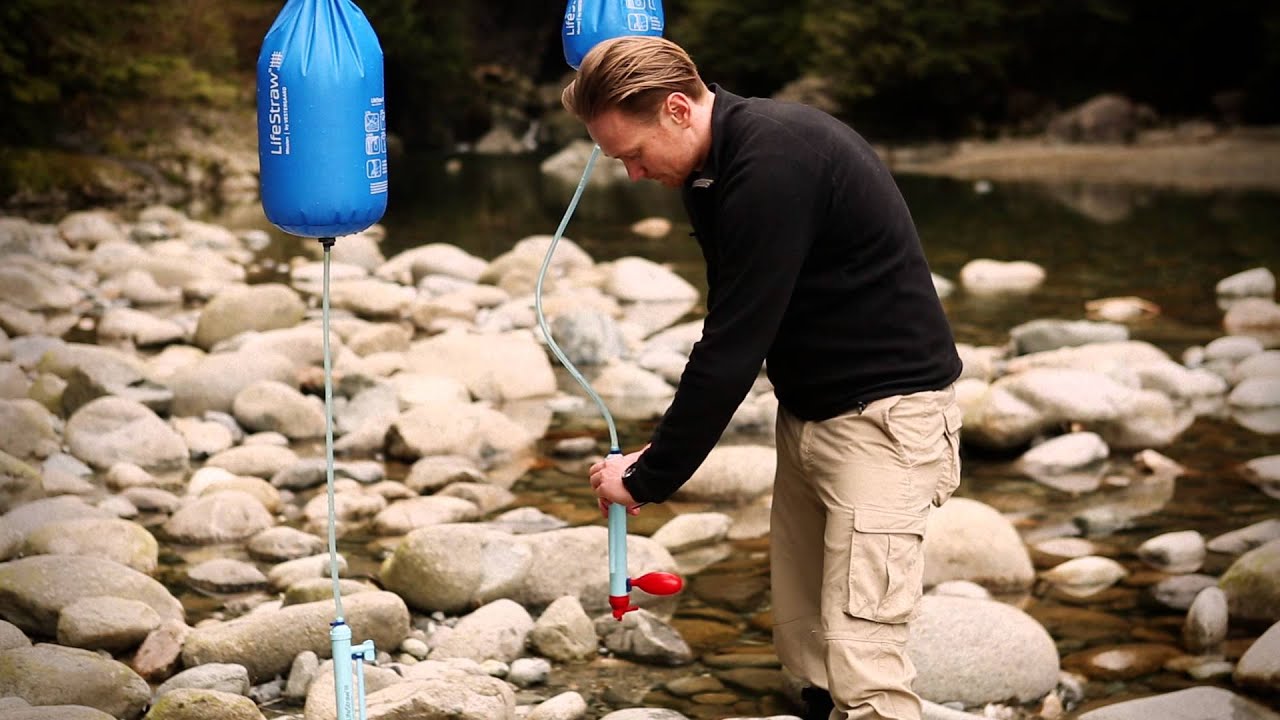
This method is nice because you can filter water in bulk, and you can set it up and let it do its thing while you work on your camp or pause for a meal. But it can take some time and requires more equipment than other filter types.
This filter type is usually better for groups or when you plan on staying in the same place for a while.
Inline filters have input and output attachments and can be used alone as straws or attached to bladders, bottles, or gravity bags to work with a variety of filter options depending on your needs.
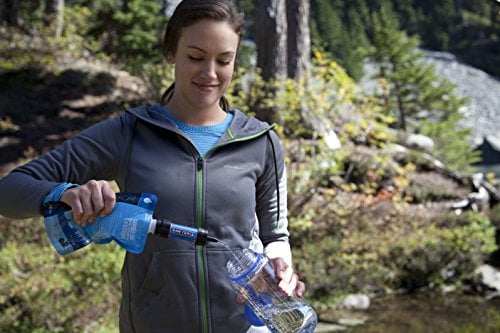
The versatility of these filters makes them an excellent choice if you plan on using your filter in a variety of situations. But they often have a low flow rate (meaning they filter water slowly).
However, they’re also usually intended to filter the water as an individual drink, in which case flow can be pretty slow.
Purifiers
Chemical purifiers are treatments, usually in the form of drops or tablets, that you add to water and kill viruses, bacteria, and protozoa.
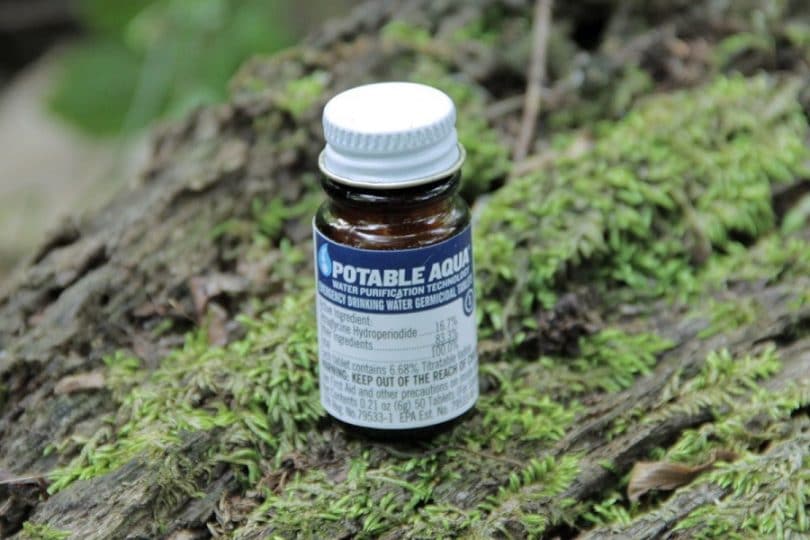
Some types of chemical purifiers leave a gross taste in the water, so having some powdered drink flavoring, like Gatorade or Crystal Light, can be handy.
UV purifiers kill viruses, bacteria, and protozoa by exposing the water to UV light.
This is a quick, easy, lightweight method to purify water. Just make sure your unit is adequate to purify the amount of water you need.
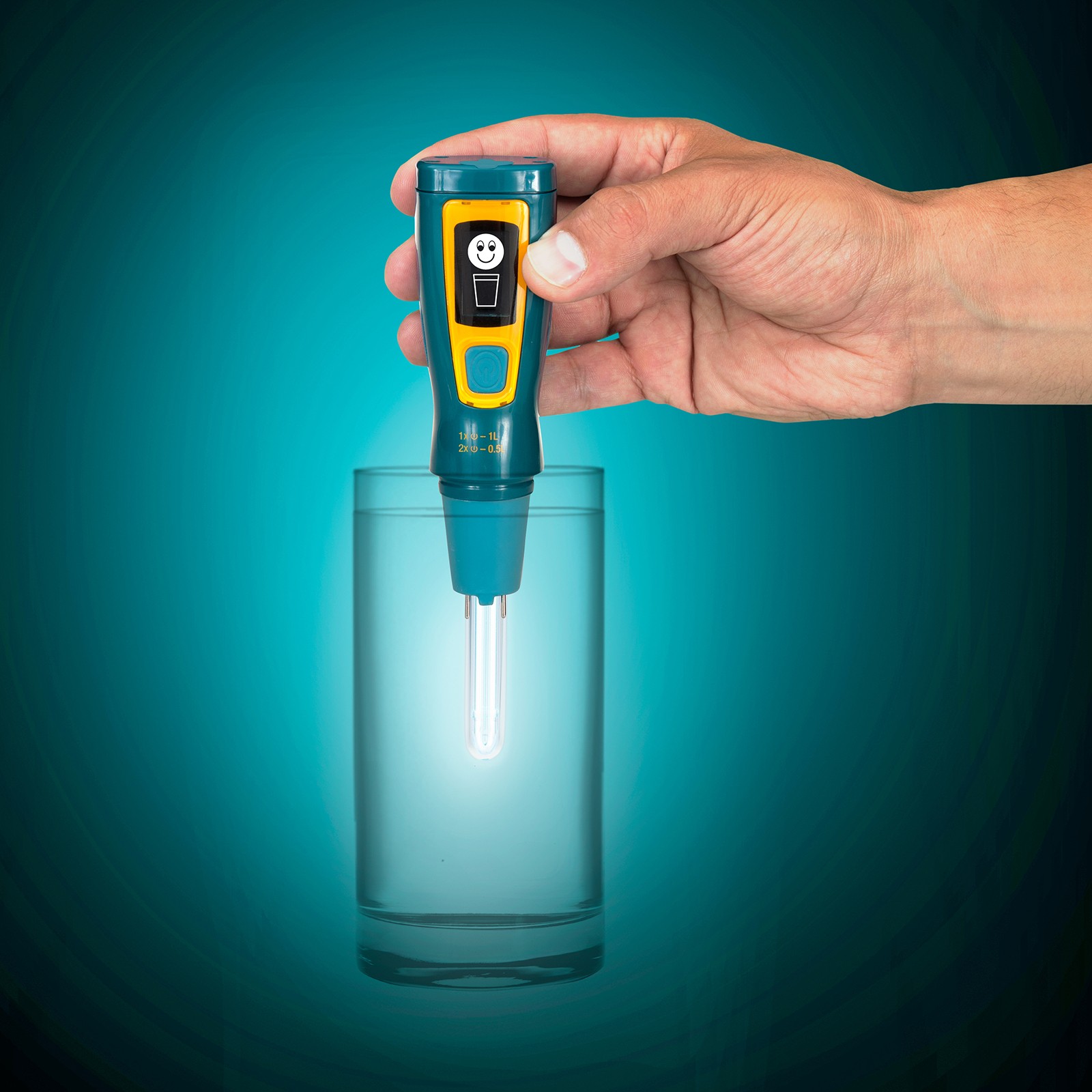
Choosing Your System & Treating Water
As you can see, you have plenty of options when it comes to water treatment, and different options are better suited for different situations.
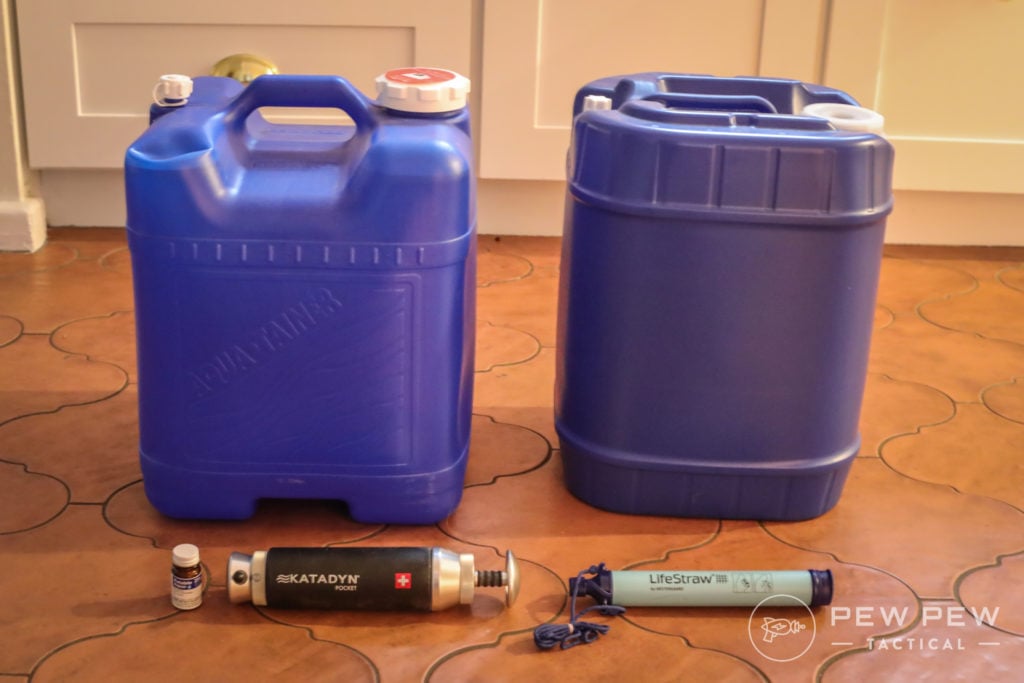
But before I close out, I want to offer a few tips for choosing a water treatment system and treating water in general.
When you choose the one that you want to go with, make sure you’re considering the following:
- source water quality
- number of people you’re treating water for
- size and weight of the filter
- ease of field maintenance
- cost of the filter (both overall and per gallon, including the initial investment, filter cartridge, pre-filter replacements, and cleaning supplies)
I would highly suggest that you take two forms of water treatment with you anytime you go out into the field as well. That way, if one of them fails, you’re still able to live.

For me, that typically means I’m carrying two of the three: a Steripen, Sawyer Mini, and iodine tablets. It depends on the trip with what I feel like carrying, but I always make sure that I have two options with me.
However, you should also make sure you know field maintenance for your filter and have the necessary equipment for basic maintenance whenever you take it on an outing.
Next, never ever put treated water where dirty water has been. Once a bucket, bottle, or any other water container has come into contact with untreated water, do not put clean water in it until the container has been sanitized.
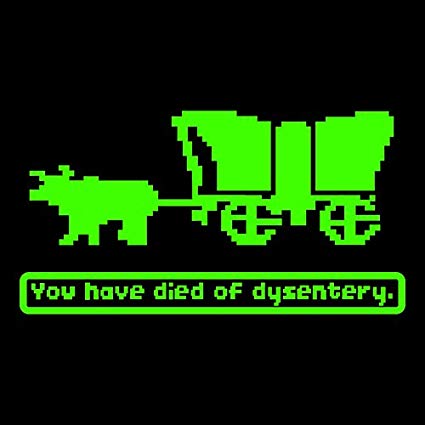
This is how cross-contamination occurs and is alarmingly common.
While it’s important to have all the right tools for treating water and making it safe to drink, it’s also essential to know where to find water.
So, make sure you know how to actually find water before any trip where you’ll have to treat it.
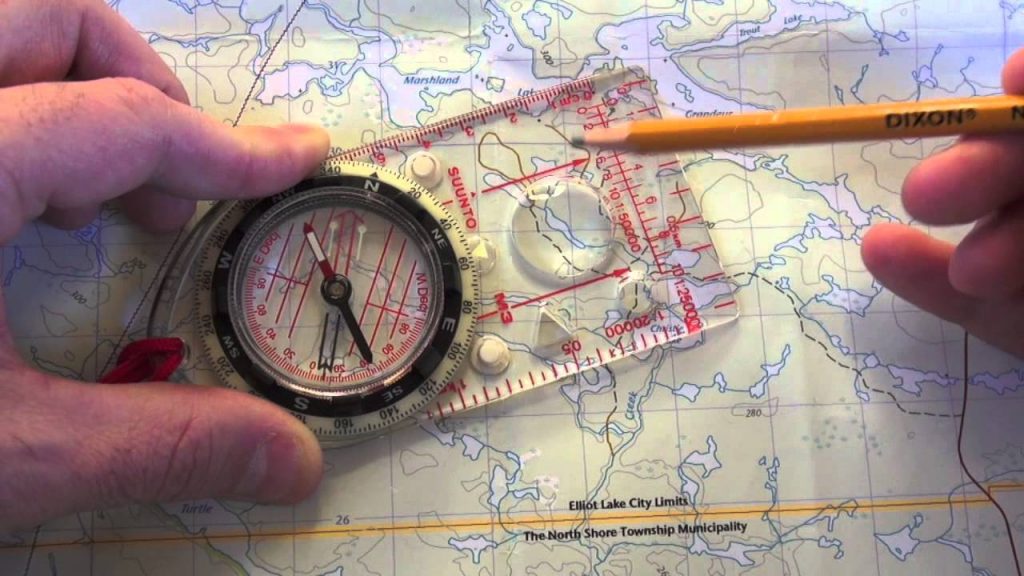
Having a map of the area is a great tool, but creeks depicted on it may be dried up, while other water sources may not appear on the map.
There are tons of tricks out there for locating water that varies in effectiveness depending on your terrain. For example, looking for vegetation may help when in the desert, but in the forest, you’ll have better luck finding low ground, looking for mud, and listening for running water. Learn a few before you need them.
Final Thoughts
Water is an essential component in the surviving equation, so make sure you have the right tools ready to use should you need it.
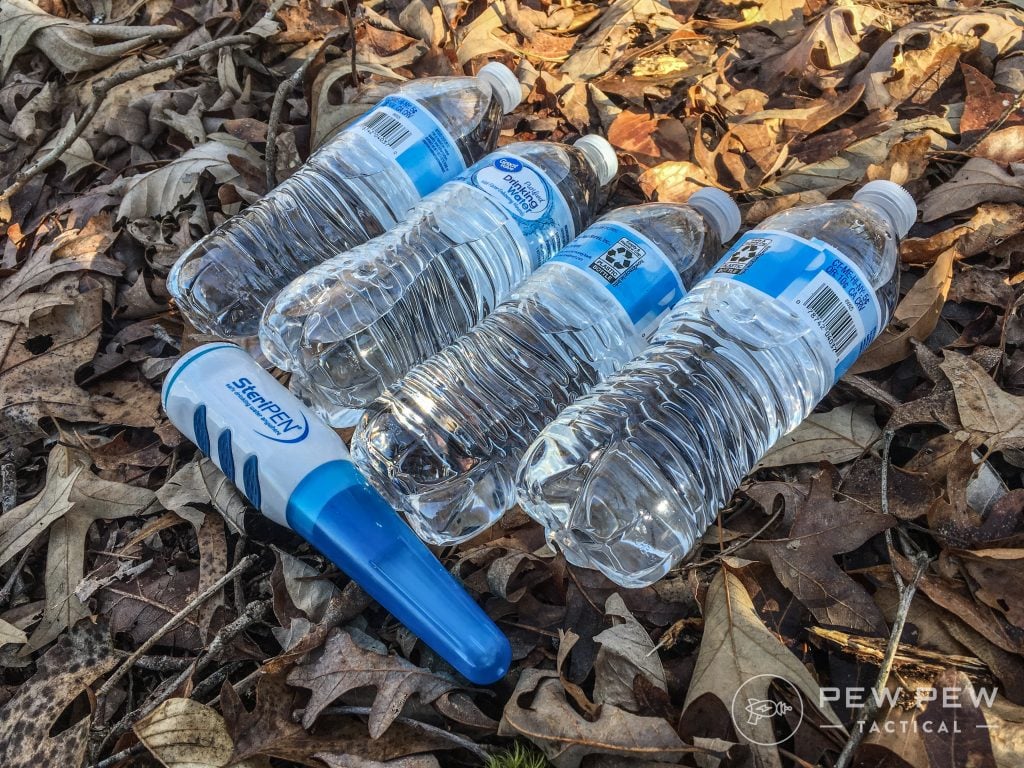
And, remember, don’t forget to brush up on those “how to find water” skills too…
What’s your go-to water filitration system? Let us know in the comments. Also, be sure to check out our articles on Best Water Storage Containers for Emergencies [Tested] and Water Bushcraft Techniques: How To Collect & Store Water.















10 Leave a Reply
If all else fails, you can use an old school method. Put charcoal on the bottom of the container, sand on top of the charcoal, and small rocks on top of the sand. Collect the filtered water from the bottom in a container that can be used for cooking. Bring the water to a rolling boil and then set a timer for 2 minutes. Remove the water from the heat source and allow to cool before you drink it.
Preuse the Sawyer mini's with gallons of water as it preps them for trail and camp use. They will then be wet internally which requires keeping them from freezing, which breaks them down and they don't function well afterwards.
It's always something -
I got the Twin kit on closeout at That Discount Store, you get two squeeze bags which you can use with the clean out adapter to gravity filter. Two many hikers complain the bags are fragile, yet its really their impatience at the slow transfer rate which causes them to abuse them. Since water on the trail must be planned for, acquired, and then stored, it's important to also make the time to do it, not in a rush to get more miles in. I bought collapsible silicone water bottles to minimize pack space and also longevity - cheap gas station bottles are discarded on far too many trails now. Silicone is also much quieter in a pack pocket for enjoying the ambiance of silence, too.
Pre filtering with coffee filters or that smelly hankerchief you sneezed in helps to keep out the big pieces, and back flushing is needed to maximize a filter's life is necessary, too.
When I first got serious about prepping 14 years ago, I bought a bunch of Lifestraws. Didn't realize just how limited the Lifestraws were. When I learned about their limitations (within a month or two of buying them), I immediately began replacing them with the Sawyer Mini's. The Lifestraws sit in a crate of barter items now.
Now, I need to get a Steri pen.
Very Informative post. Thanks for sharing your knowledge with us.
Nice post. I was checking constantly this blog and I am impressed! Very useful info specifically the last part :) I care for such info a lot. I was looking for this particular info for a long time. Thank you and good luck.
Greetings! Very helpful advice in this particular post! It’s the little changes which will make the greatest changes. Thanks a lot for sharing! Regards Ross Alisha
Thanks for this article. Helped out a lot.
Just gradually build up immunity. Start with drinking tap water during your vacations to Mexico. Next share your dogs bowl. Then move on to mud puddles. Finally if you are still alive, shove the dog out of the way and drink from the toilet.....flush first.
Just kidding, great article. The life straw line will cover your basic needs. Instead of a bandana as a pre-filter I use a simple square aquarium filter cartridge.
Platypus gravity works is another great gravity feed system.
"Thanks for ones marvelous posting! I actually enjoyed reading it, you can be a great author.
I will remember to bookmark your blog and may come back later in life.
I want to encourage continue your great work,
have a nice afternoon!"